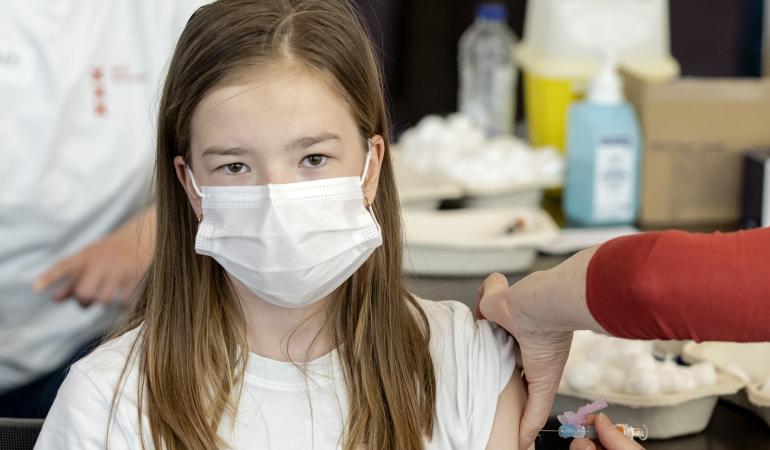
Participation in the National Immunisation Programme has fallen slightly, showing a decrease of 1 to 2 percentage points. During the COVID-19 pandemic, the staff of Youth Healthcare Services made considerable efforts to reach as many families as possible and to vaccinate children. This led to a limited decline in participation. This is set out in the ‘Vaccination coverage and annual report National Immunisation Programme in the Netherlands 2021’.
In the Netherlands, children receive vaccinations for 12 infectious diseases. Each year, RIVM (Rijksinstituut voor Volksgezondheid en Milieu) reports on how many children have been vaccinated (vaccination coverage). A high vaccination coverage is crucial because a disease will, as a result, not occur or occur less often. The vaccination coverage is determined in the first week of March each year.
Slight decrease
The vaccination coverage of almost all vaccinations of the National Immunisation Programme is slightly lower than a year earlier. This is partly due to the fact that some vaccinations were given at a later date than usual as a result of the COVID-19 pandemic. Group vaccinations, for example, were postponed, and vaccination appointments occasionally had to be rescheduled if a parent or child was forced to self-isolate.
If we also take into account the vaccinations that were given at a later date than normal, the vaccination coverage for most vaccinations is still slightly lower than a year earlier. For babies up to 2 years of age, the difference is only about 1 percentage point. For older children, the difference is 1 to 2 percentage points. If this decline were to continue in the coming year, an enquiry would be required into the cause. This would allow measures to be taken based on the results.
Explanatory notes: MMR = mumps, measles, rubella; HPV (Humaan Papilloma Virus) = human papillomavirus infection;
full = received all National Immunisation Programme vaccinations at 2 years of age.
Figure P1 Vaccination coverage (%) as of 2 March 2021 compared to 3 March 2022; determined at 2 years of age (babies), 10 years of age (school children) and 14 years of age (adolescent girls); in grey: vaccination coverage including vaccinations given at a later date. The vaccination coverage is determined in the first week of March each year.
Large proportion of anonymous vaccinations a key concern
Since 1 January 2022, Youth Healthcare Services is required to record in the digital system whether parents (and/or the child) consent to their vaccination data and their personal data being shared with the National Institute for Public Health and the Environment (RIVM). RIVM needs these personal data to be able to count the vaccinations, in order to calculate the vaccination coverage. If no permission is given, part of the required data are missing. In that case, RIVM cannot determine whether there has been or will be a change in vaccination coverage. The large proportion of vaccinations for which no permission has been registered (approximately 12 percent up to 12 May 2022) is therefore a key concern. This has little impact on the current report.